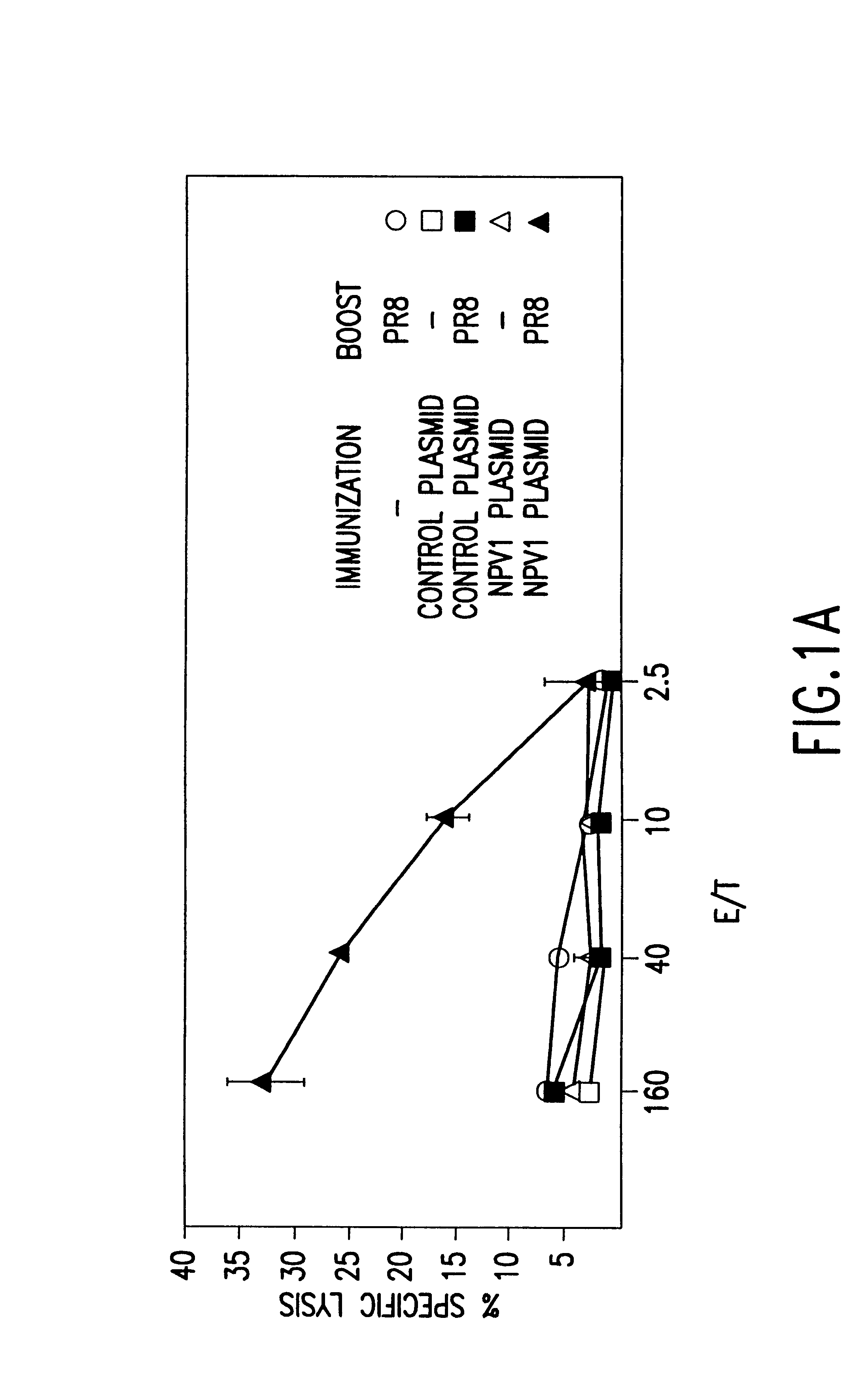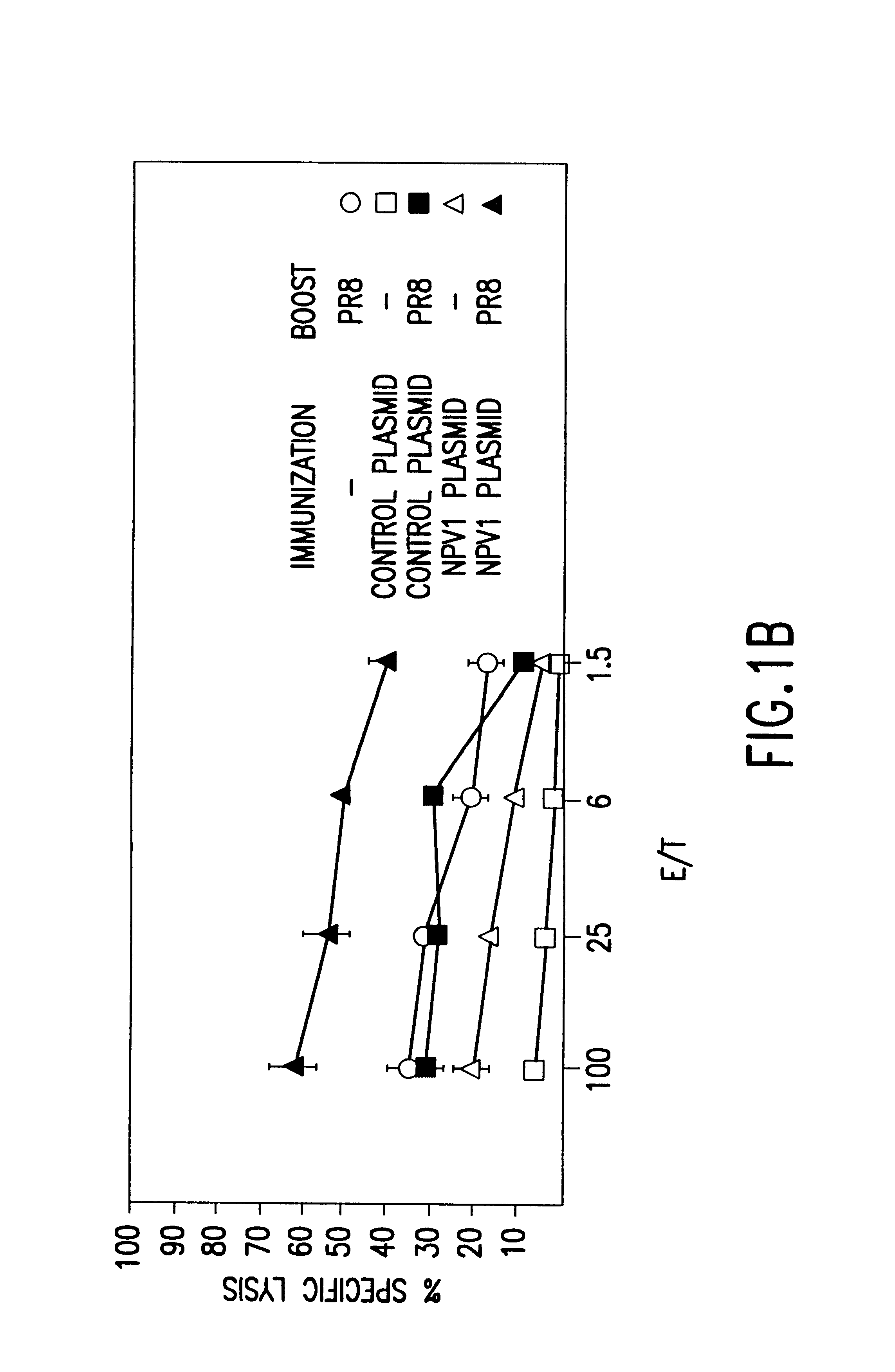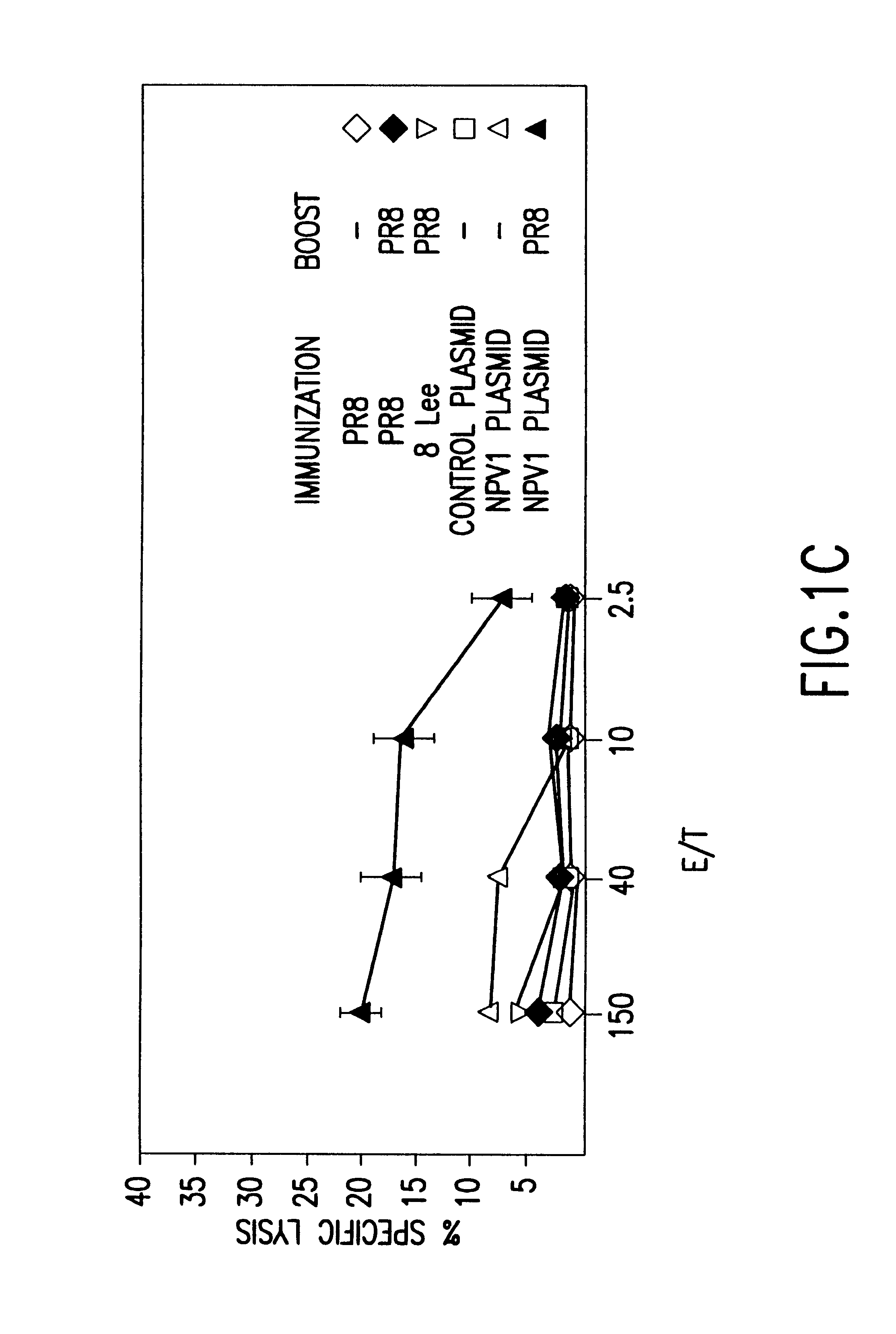Immunization of infants
- Summary
- Abstract
- Description
- Claims
- Application Information
AI Technical Summary
Benefits of technology
Problems solved by technology
Method used
Image
Examples
Embodiment Construction
For purposes of clarity of description, and not by way of limitation, the detailed description of the invention is divided into the following subsections:
(i) compositions for immunization; and
(ii) methods of immunization.
5.1. Compositions For Immunization
The present invention provides for compositions which may be used to immunize infant mammals against a target antigen which comprise an effective amount of a nucleic acid encoding a relevant epitope of the target antigen in a pharmaceutically acceptable carrier.
Nucleic acids which may be used herein include deoxyribonucleic acid ("DNA") as well as ribonucleic acid ("RNA"). It is preferable to use DNA in view of its greater stability to degradation.
The term "target antigen" refers to an antigen toward which it is desirable to induce an immune response, Such an antigen may be comprised in a pathogen, such as a viral, bacterial, protozoan, fungal, yeast, or parasitic antigen, or may be comprised in a cell, such as a cancer cell or a ce...
PUM
| Property | Measurement | Unit |
|---|---|---|
| Time | aaaaa | aaaaa |
| Time | aaaaa | aaaaa |
| Time | aaaaa | aaaaa |
Abstract
Description
Claims
Application Information
 Login to View More
Login to View More - R&D
- Intellectual Property
- Life Sciences
- Materials
- Tech Scout
- Unparalleled Data Quality
- Higher Quality Content
- 60% Fewer Hallucinations
Browse by: Latest US Patents, China's latest patents, Technical Efficacy Thesaurus, Application Domain, Technology Topic, Popular Technical Reports.
© 2025 PatSnap. All rights reserved.Legal|Privacy policy|Modern Slavery Act Transparency Statement|Sitemap|About US| Contact US: help@patsnap.com



